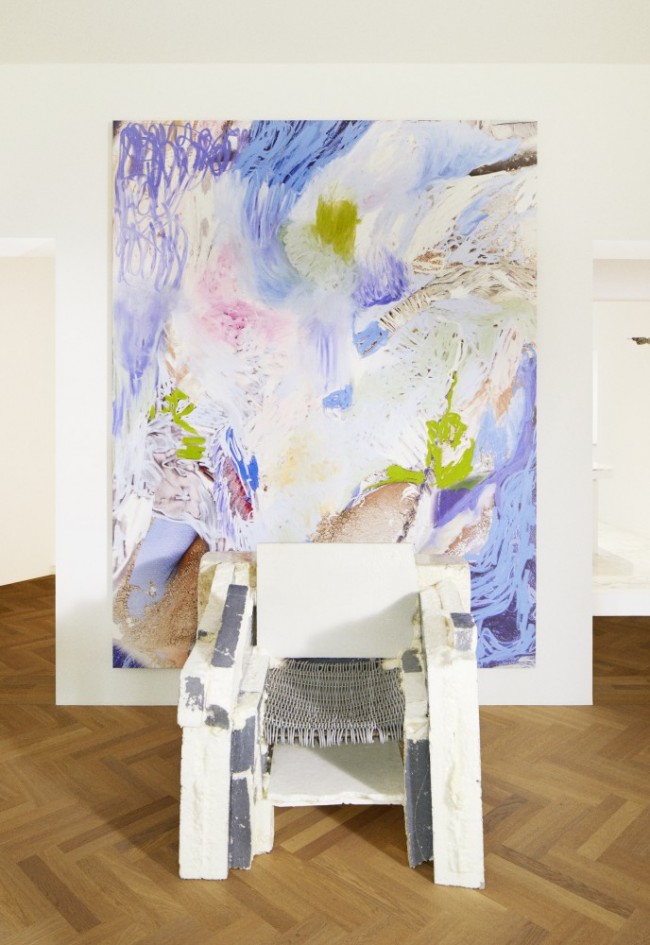BOYFRIEND MATERIAL: A Studio Visit with Thomas Barger
-

Portrait of Thomas Barger in his studio.
-

Portrait of Thomas Barger in his studio.
-
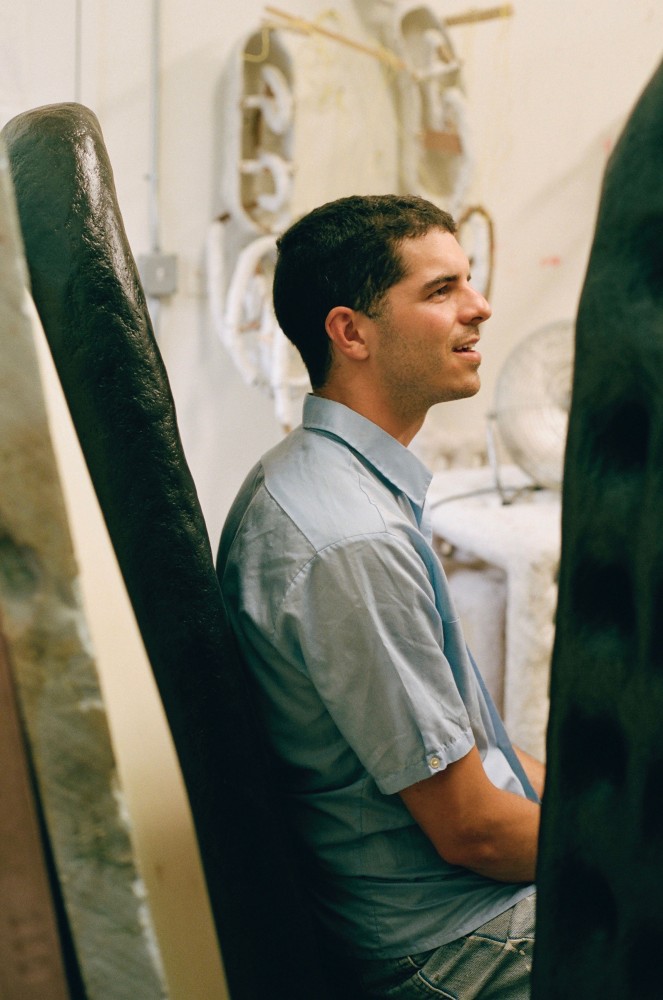
Portrait of Thomas Barger in his studio.
-
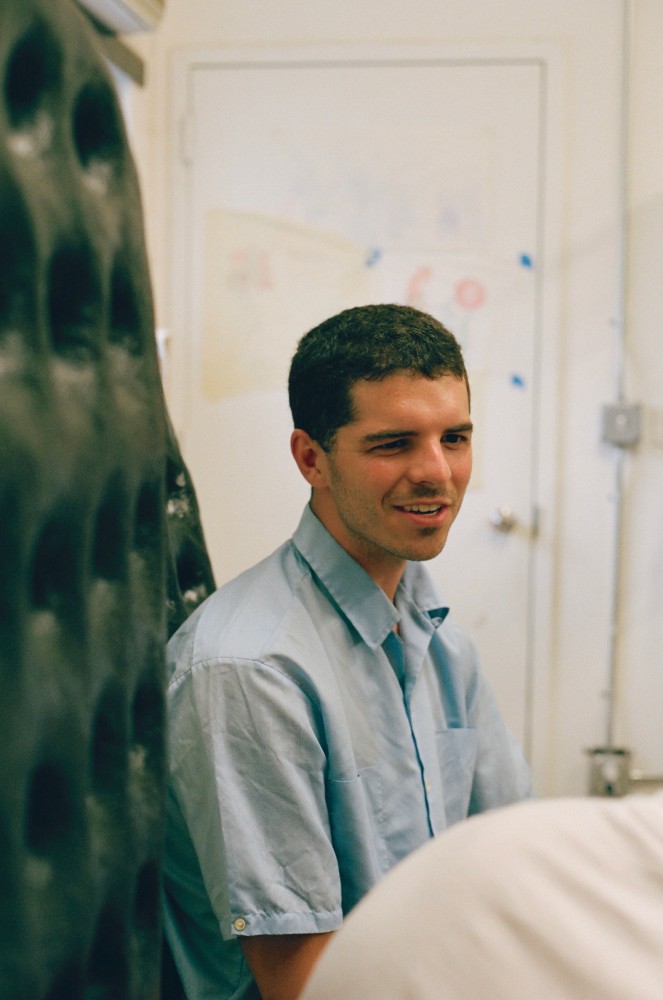
Portrait of Thomas Barger in his studio.
At first glance, the work of 25-year old Thomas Barger appears like the furniture you might expect from a Wallace & Gromit animation. Although they’re perfectly functional, Barger does not see his objects as mere tables and chairs, but rather sculptures that speak to his life and identity as an artist. “What is important to me isn’t so much the design aspect of the work, but highlighting the relationships I find significant in my life. I’m more excited about sharing a story than making a chair.”
-
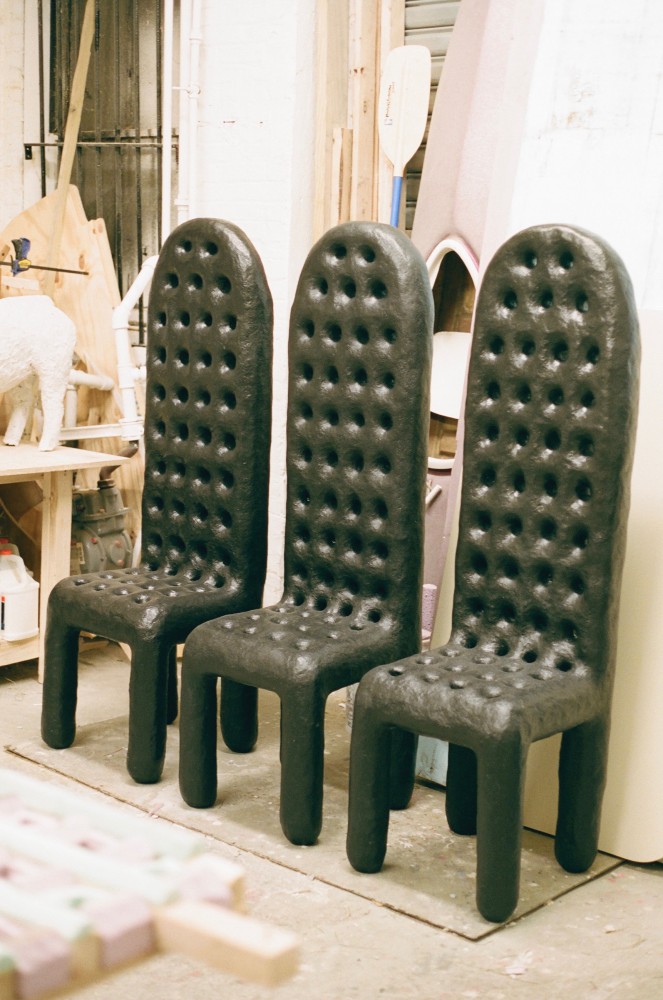
Tall Church Boys in black at the studio.
-

Tall Church Boy in black photographed at Barger's studio.
-

Detail from Thomas Barger's studio.
-
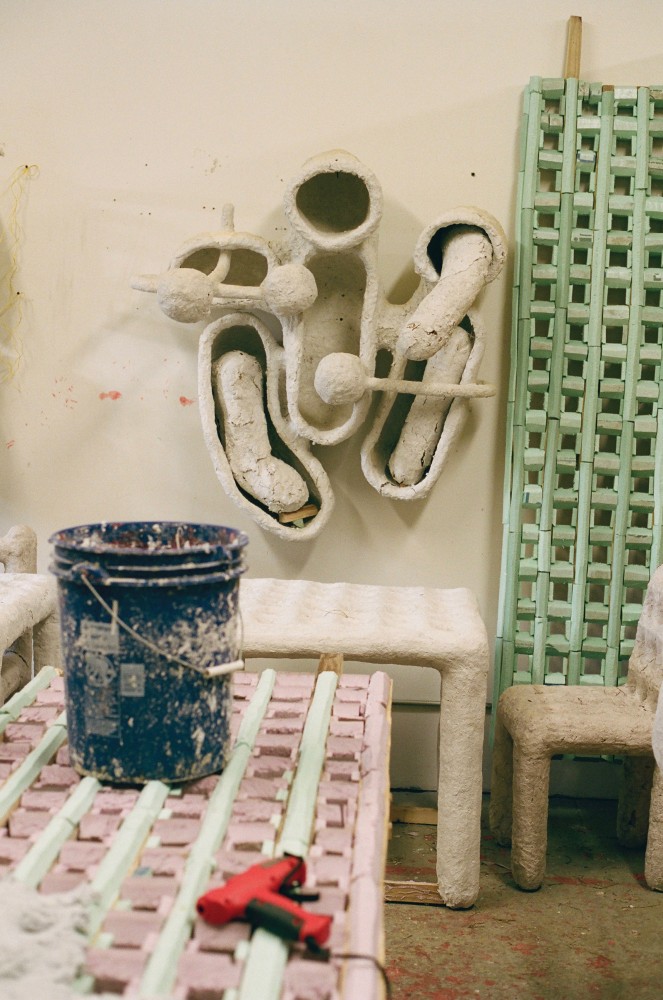
View from Thomas Barger's studio.
-

Pieces in the making at Barger's studio.
Growing Up, Barger’s first solo exhibition at New York’s Salon 94 Design gallery this spring, showed pieces with wonky proportions, soft edges, and perky colors to communicate his turbulent experiences with domesticity, hetero-conventions, and queerness “The nature of my work changed a lot after coming out to my family,” explains the artist, who grew up on a farm in Mattoon, Illinois, the son of Christian, conservative parents. “Where before I only made arbitrary sculpture-chairs, I began finding clear references to what I was talking about.” Now, already in preparation for a show in the Fall of 2019, at Functional Art Gallery in Berlin, these references include everything from farm animals and tractor tires to religion and his first boyfriend.
-

Chair sketches by Thomas Barger.
-
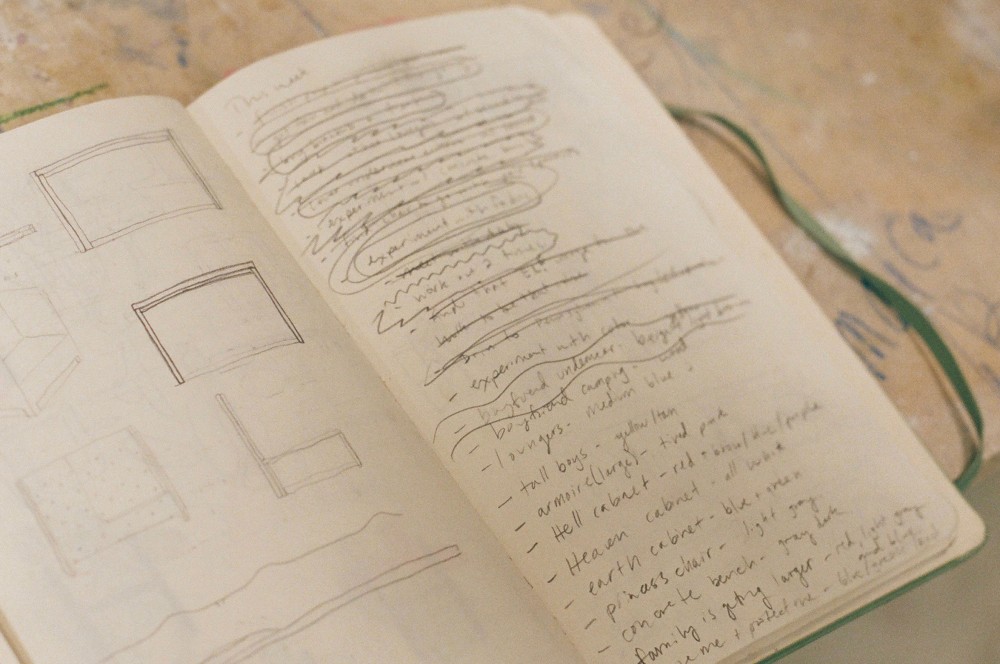
Detail from a sketchbook at Thomas Barger's studio.
-

View of Thomas Barger's studio.
-
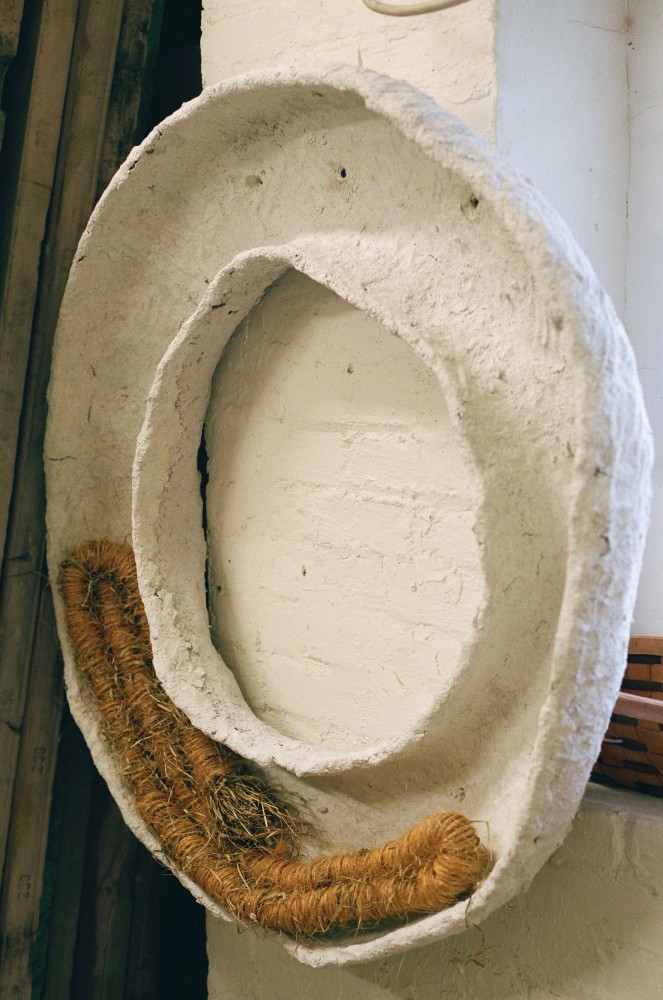
Detail from Thomas Barger's studio.
Since he chooses to express himself through furniture, Barger’s work has often been read through the lens of design, something he’s never felt entirely comfortable with. “I identify as an artist making this work, not as a designer. I want to express things and not have them confused as utilitarian furniture.” His practice grew out of the time he spent assisting friends such as artist Misha Kahn and working for the woman he now calls his mentor, Jessi Reaves, who empowered him to “to do something even though you’re not skilled at doing it.” Barger’s pieces recline on the associations with home alluded to by the discarded structures they’re built on, such as old IKEA chairs or foldable furniture. “I started out with that (first experimental) chair because it was all about home and all about this world of conservative beginnings. That was a layer of content and detail that was special. It was really just a way of working on a framework that reminded me of home.” Barger finds himself today fine-tuning the expression of his works through pieces he calls “wall drawings.” “They were meant to be on the floor originally, but I didn’t want them to turn into functional works.” These hanging paper constructions, which are an evolution of his previously exhibited laundry unit, I Never Had a Closet-Closet (2018), merge sculpture and drawing into one, and are intended to unshackle the meaning and relationships of his work from all functional misconceptions.
-

Detail from Thomas Barger's studio.
-
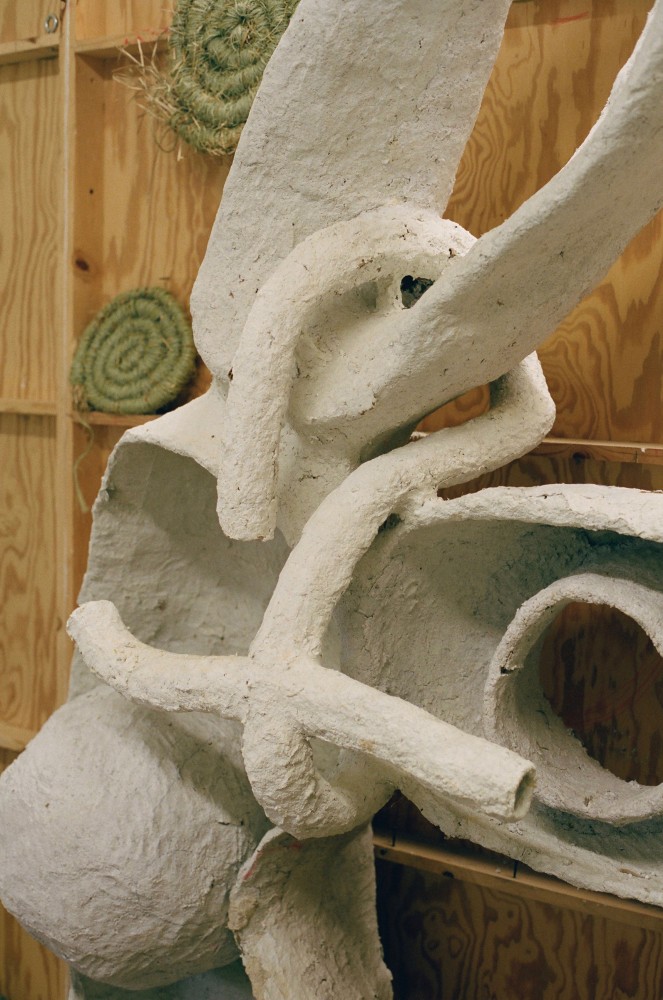
Detail from Thomas Barger's studio.
-
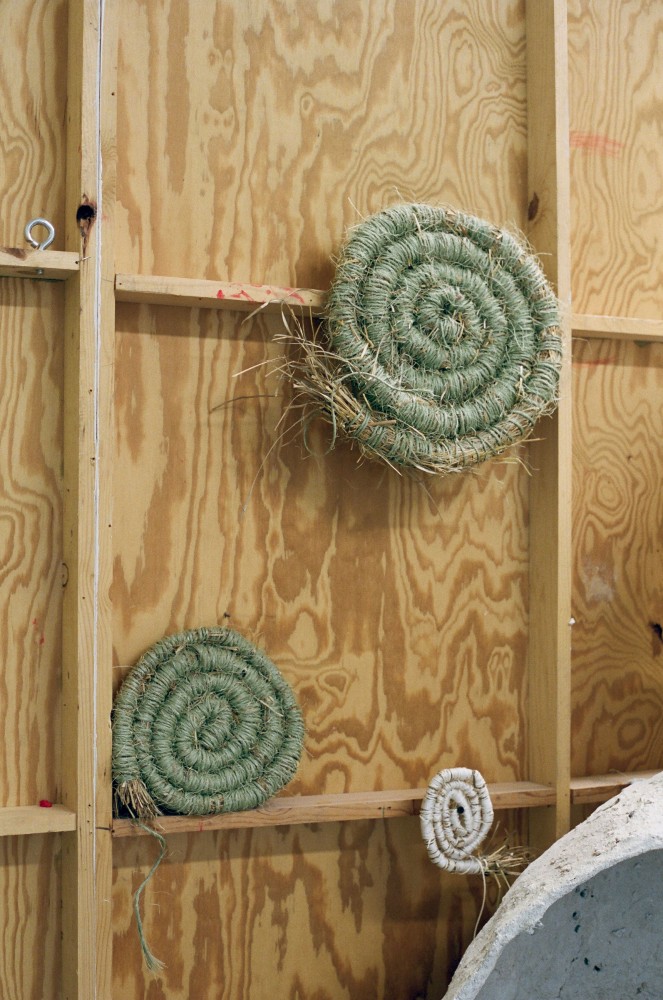
Detail from Thomas Barger's studio.
-

Detail from Thomas Barger's studio.
-

Detail from Thomas Barger's studio.
Other objects making their way into the Berlin show include two elongated pieces that merge a table, a lounger, and a bed evoking “what you do on a date night with a sweetie,” along with an allegorical sculpture of two cows — “depending on each other, the way you do in a relationship,” Barger offers. Still, on a pastoral note, he describes some of his upcoming pieces with comic uncertainty as “unequally yoked or equally yoked.” Under the general theme “boyfriend,” Barger’s Berlin outing will return to the “much more explicit, much more concentrated” sexual nods of his first chair experiment while pivoting between past reflections and present experience. “Now that I’ve had a relationship and the experience where I have loved and felt loved, I’m really excited to share that story and be in that vulnerable place again.”
Text by Efe Ramirez.
All studio photography by Chandler Kennedy for PIN–UP.
Taken from PIN–UP 25 Fall Winter 2018/19.



